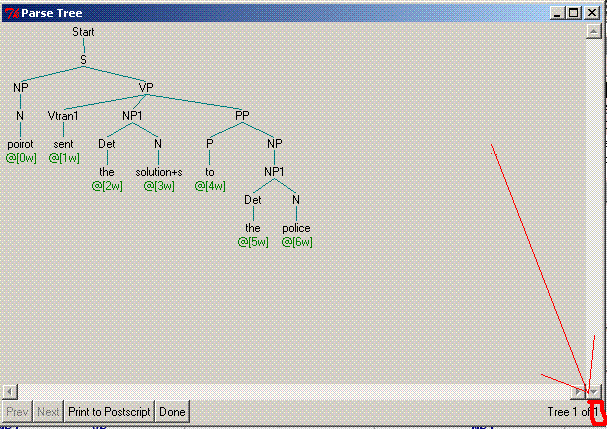| Output: | output-0.txt |
For ease of reading, this was produced by
earley -blab2b-sentences.txt lab2b-0.grm | grep -v Kimmo > output-0.txtThis way we only see the results, not Kimmo's verbosity (though it's useful for debugging). Further output-*.txt files have been produced similarly. |
| Lexicon: | english2b-0.lex | |
| Grammar: | lab2b-0.grm |

| Output: | output-1.txt |
| Lexicon: | english2b-1.lex |
| Grammar: | lab2b-1.grm |
| Output: | output-feat.txt | (We were not expected to parse the last phrase) |
| Lexicon: | english2b-feat.lex | |
| Grammar: | lab2b-feat.grm |
| Output: | output-gap.txt |
| Input: | input26.txt |
| Lexicon: | english2b-gap.lex |
| Grammar: | lab2b-gap.grm |
RANDOM NOTE: Gotta watch trailing spaces in the lex file! kimmo.py gets confused!!!